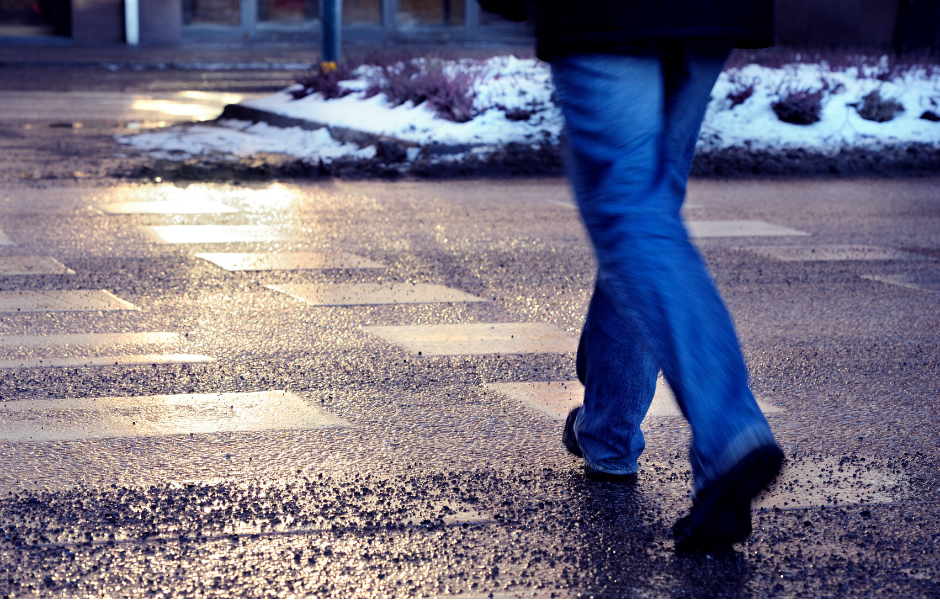Pedestrians are considered the most vulnerable people on the roadway because of just how easily they can get hurt or overlooked by drivers, especially at this time of year. Dark mornings and early evenings are upon us and since the sun rises later and sets earlier pedestrians are more likely to be out and about during low-visibility hours. With a lot more people walking around in the dark, it’s not surprising that motor vehicle accidents involving pedestrians tend to increase in the late fall.
Consider that many seasonal activities including football and the holiday rush cause people to be distracted and may involve alcohol consumption, and you have a recipe for increased risk.
Pedestrian fatalities throughout the year, have been consistently on the rise for more than a decade, according to National Highway Traffic Safety Administration (NHTSA) data. According to the Governors Highway Safety Association, which tracks pedestrian deaths in the U.S., more than 7,500 pedestrians were killed by drivers last year — the highest number since 1981.
To address these concerning statistics and make changes, we need to understand the conditions and circumstances that make the roads dangerous for pedestrians.
Here’s the breakdown:
- Nearly half of all pedestrian accidents happen during low visibility times. Approximately 30% occur at twilight (between 6 and 8 p.m. during fall and winter) and nearly 20% happen at daybreak (between 5 and 7 a.m. during fall and winter.) Another 20% of accidents happen between 12 and 3 a.m.
- Almost half (47%) of crashes that resulted in a pedestrian death involved alcohol for the driver and/or the pedestrian. One in every three (33%) fatal pedestrian crashes involved a pedestrian with a blood alcohol concentration of at least 0.08 grams per deciliter (g/dL), 17% involved a driver with a blood alcohol concentration of at least 0.08 g/dL, and some fatal pedestrian crashes involved both.
- Pedestrians aged 65 and older accounted for 20% of all pedestrian deaths and an estimated 10% of all pedestrian injuries in 2017. One in every five children under the age of 15 killed in traffic crashes were pedestrians in 2017.
- Higher vehicle speeds increase both the likelihood of a pedestrian being struck by a car and the severity of the injury.
- Most pedestrian deaths occur in urban areas, at non-intersection locations.
Safety Tips
While the data shows it might be safest to go for a walk, exercise or take care of errands during daylight hours, most of us don’t have that option during the fall and winter months. Here are some tips for staying safe when you are out and about in the dark:
- Give yourself enough time to get to where you are going, especially as weather conditions decline.
- Increase your visibility by carrying a flashlight when walking and wearing reflective clothing, such as reflective vests.
- Cross streets at designated crosswalks or intersections, whenever possible.
- Walk on a sidewalk or path instead of the road. Walk on the shoulder and facing traffic if a sidewalk or path is not available.
- Avoid using electronic devices like earbuds or your phone when walking.
- Know that if you have been using alcohol or drugs judgment and coordination are impaired. Consider walking with a sober buddy.
- Prepare for the weather conditions. Make sure you are wearing proper footwear if it is wet or icy.
- Pay attention, keep your head up and try to make eye contact with approaching drivers.
We all have a responsibility to keep our roadways safe. By taking a few simple precautions, making yourself visible to drivers and being aware and prepared for your surroundings and the weather, you can do your part.

